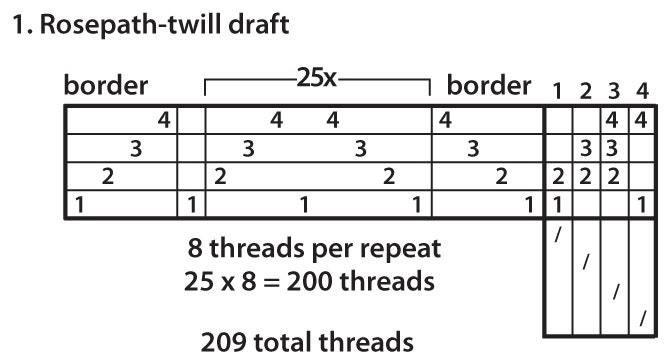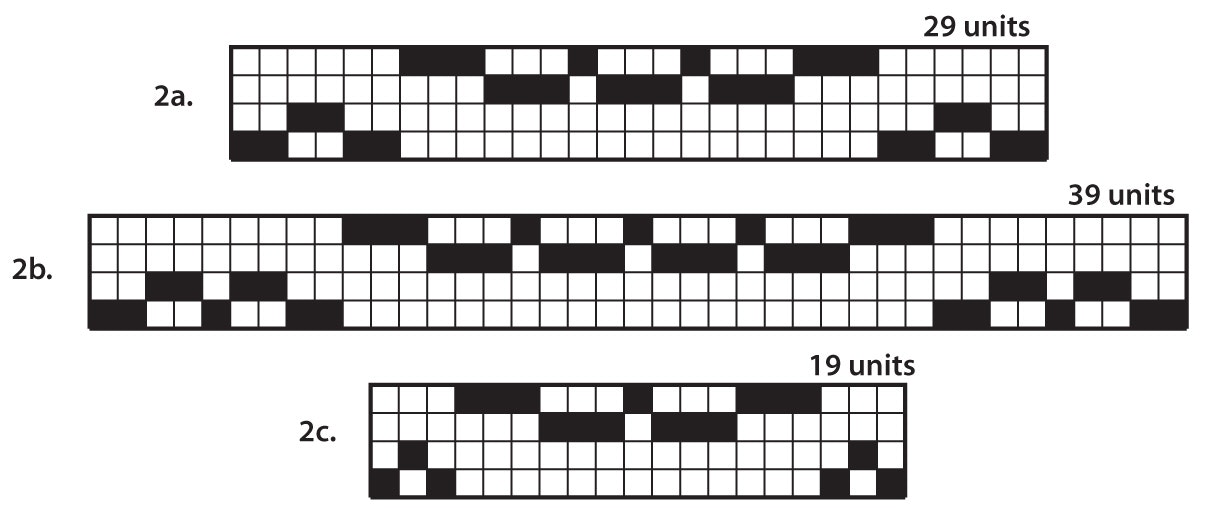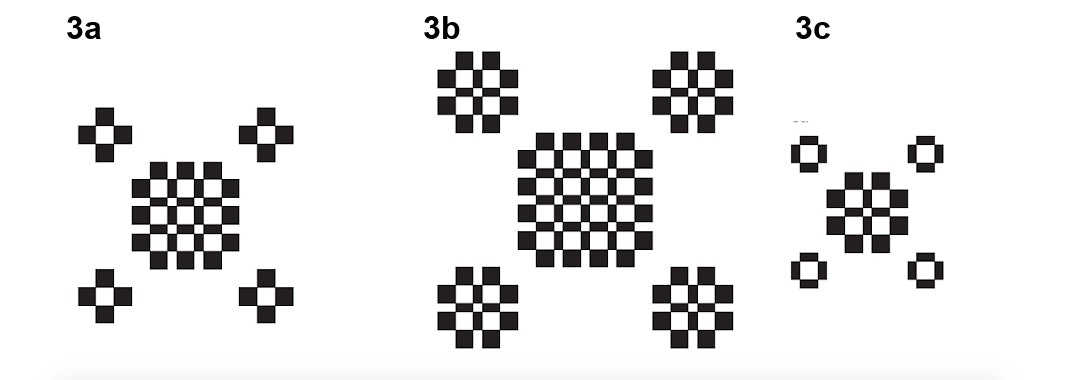Hi Madelyn,
Thank you for all the information and patient replies to queries, creating a rich knowledge base. I wish to know about enlarging drafts. Is it as simple as multiplying the warp and weft by an increment—say times 4? Should you simply apply the same increment to factors such as the selvedges or borders?
—Melissa
Hi Melissa!
Simply repeating a given threading draft will certainly add to its width, and repeating the treadling draft will add to its length. Usually, though, you’ll want to think about how repeating various elements will affect the overall design.

Many drafts are divided into borders and repeats. When you add to any one part, you’ll want to consider the overall proportions of the result. For example, if you consider the draft in Figure 1, the rosepath-twill repeat consists of 8 threads (1/3" weaving width in 10/2 cotton at 24 ends per inch, for example). You can add to that repeat as many times as needed (or subtract as many times) to achieve your desired fabric width. You can also add to the borders in Figure 1 (four threads on each side equals eight threads total for each increase). How many times you repeat either the border or the field depends on the proportion you’d like (of border to field) and your desired fabric width.

You can adjust the width and length of block designs by enlarging or reducing block size or by adding or subtracting blocks (adding or subtracting pairs of blocks from 2-block motifs works especially well). The 29 unit profile threading in Figure 2a is increased to 39 units in 2b and reduced to 19 units in 2c; see the resulting profile drawdowns in 3a, 3b, and 3c. Computer weaving programs are especially useful for adjusting proportions in both thread-by-thread and block drafts.

—Madelyn

